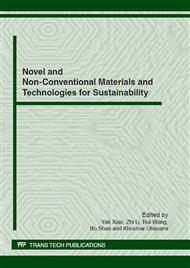p.832
p.836
p.844
p.850
p.858
p.864
p.870
p.875
p.881
The Quota and Analysis of Comprehensive Energy Consumption per Unit for Residential Buildings in Changsha
Abstract:
Using an appropriate evaluation index for energy consumption is advantageous for evaluating energy saving effect of buildings correctly and carrying out energy-saving action reasonably. As a result, it is important to establish a practical quota of energy consumption for promoting energy-saving emission reduction. Energy consumption for residential buildings has been influenced by the behavior of residents in the building largely, and has a higher uncertainty, so it brings great difficulty to researches. Considering the characteristics of residential buildings, this paper uses comprehensive energy consumption per unit as evaluation index. Based on the investigation results and related studies, the residential buildings in Changsha are analyzed with statistical methods, in order to know more about the energy consumption level and structure for the residential buildings in Changsha. This paper shows the characteristics of the energy consumption of the residential buildings in Changsha, and work out the range of the comprehensive energy consumption per unit. The result provides a reference to make out energy policy and enhance the management of energysaving. It can be also used to guide the residents have a reasonable electric power utilization.
Info:
Periodical:
Pages:
858-863
Citation:
Online since:
June 2012
Authors:
Price:
Сopyright:
© 2012 Trans Tech Publications Ltd. All Rights Reserved
Share:
Citation:


